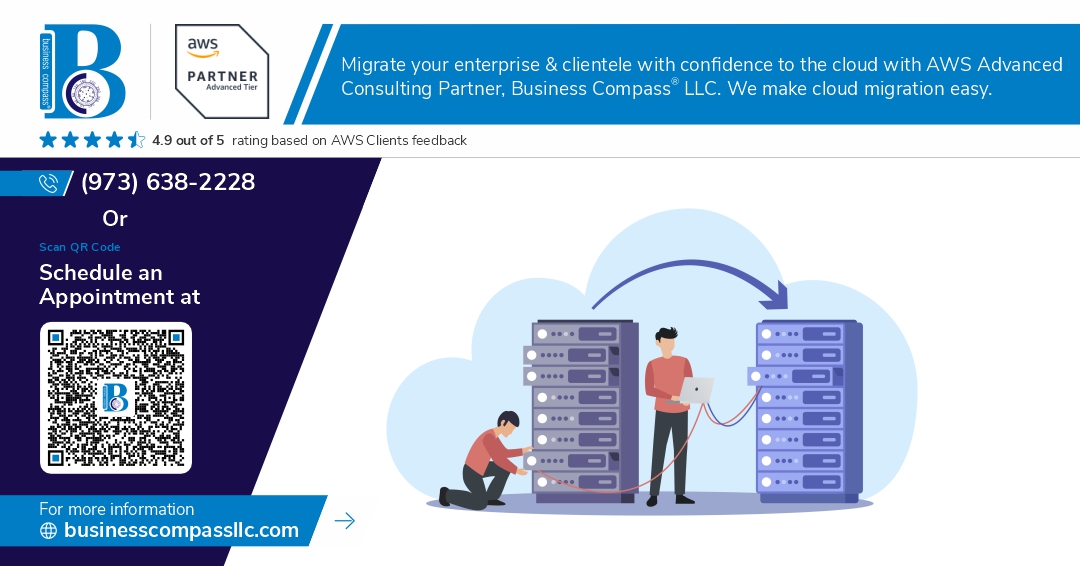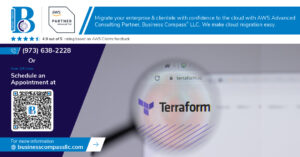Are you tired of the headaches that come with managing on-premise databases? 🤯 The constant maintenance, scalability issues, and high costs can be overwhelming. But what if there was a better way?
Enter AWS database services – a game-changing solution that’s revolutionizing how businesses handle their data. With options like RDS, DynamoDB, Aurora, Redshift, and ElastiCache, AWS offers a robust suite of database services that can transform your data management strategy. But how do you make the switch?
In this comprehensive guide, we’ll walk you through the process of migrating from on-premise solutions to AWS databases. From understanding the various AWS offerings to executing the migration and optimizing performance, we’ve got you covered. Get ready to discover how you can streamline your database management, enhance security, and unlock new possibilities for your business. Let’s dive in and explore the world of AWS database migration!
Understanding AWS Database Services
A. Overview of RDS, DynamoDB, Aurora, Redshift, and ElastiCache
AWS offers a robust suite of database services to cater to diverse application needs. Here’s a brief overview of each service:
- RDS (Relational Database Service): Managed relational databases supporting multiple engines.
- DynamoDB: Fully managed NoSQL database for high-performance applications.
- Aurora: MySQL and PostgreSQL-compatible relational database with enhanced performance.
- Redshift: Fully managed data warehouse for large-scale analytics.
- ElastiCache: In-memory caching service supporting Redis and Memcached.
B. Key features and benefits of each service
| Service | Key Features | Benefits |
|---|---|---|
| RDS | Multi-AZ deployment, automated backups | Easy setup, scalability, high availability |
| DynamoDB | Serverless, auto-scaling | Low latency, flexible data model |
| Aurora | Distributed storage, parallel query processing | High performance, cost-effective |
| Redshift | Columnar storage, MPP architecture | Fast query performance, scalable analytics |
| ElastiCache | Sub-millisecond latency, Redis clustering | Improved application performance, real-time data processing |
C. Comparison with on-premise database solutions
AWS database services offer several advantages over on-premise solutions:
- Reduced management overhead
- Automatic scaling and high availability
- Pay-per-use pricing model
- Built-in security features
- Seamless integration with other AWS services
However, on-premise solutions may still be preferred for:
- Strict data residency requirements
- Legacy applications with specific dependencies
- Complete control over hardware and software stack
When considering migration, evaluate your specific needs against these factors to determine the best approach for your organization.
Assessing Your Current On-Premise Database
Evaluating database type and workload
Before migrating to AWS database services, it’s crucial to assess your current on-premise database. Start by evaluating your database type and workload characteristics. This step helps you choose the most suitable AWS database service for your needs.
Consider the following factors:
- Database engine (e.g., MySQL, PostgreSQL, Oracle)
- Data structure (relational vs. non-relational)
- Transaction volume and frequency
- Query complexity and patterns
- Data size and growth rate
| Workload Type | Recommended AWS Service |
|---|---|
| Relational OLTP | Amazon RDS, Aurora |
| NoSQL | DynamoDB |
| Data Warehousing | Redshift |
| Caching | ElastiCache |
Identifying performance bottlenecks and scalability issues
Analyze your current database performance to identify bottlenecks and scalability challenges. This information will guide your migration strategy and help you leverage AWS services effectively.
Key areas to examine:
- CPU utilization
- Memory usage
- I/O operations
- Query execution times
- Connection limits
Use monitoring tools to gather performance metrics over time, focusing on peak usage periods and growth trends.
Determining data security and compliance requirements
Security and compliance are critical aspects of database management. Assess your current security measures and compliance obligations to ensure a smooth transition to AWS.
Consider the following:
- Data encryption requirements (at rest and in transit)
- Access control and authentication methods
- Audit logging and monitoring needs
- Regulatory compliance (e.g., GDPR, HIPAA)
- Disaster recovery and backup strategies
By thoroughly evaluating these aspects of your on-premise database, you’ll be well-prepared to choose the right AWS database service and develop an effective migration strategy. Next, we’ll explore how to plan your migration to ensure a successful transition to the cloud.
Planning Your Migration Strategy
Choosing the right AWS database service for your needs
When planning your migration strategy, selecting the appropriate AWS database service is crucial. Consider factors such as scalability, performance, and specific use cases for each service:
| AWS Database Service | Best For | Key Features |
|---|---|---|
| RDS | Relational databases | Multi-AZ deployments, automated backups |
| DynamoDB | NoSQL applications | Serverless, auto-scaling |
| Aurora | High-performance relational | MySQL and PostgreSQL compatible |
| Redshift | Data warehousing | Petabyte-scale, columnar storage |
| ElastiCache | In-memory caching | Redis and Memcached support |
Estimating costs and ROI
To accurately estimate costs and ROI:
- Use the AWS Pricing Calculator
- Consider long-term savings with Reserved Instances
- Factor in reduced maintenance and infrastructure costs
- Evaluate potential performance improvements
Creating a timeline and resource allocation plan
Develop a comprehensive migration plan:
- Set realistic milestones
- Allocate team resources effectively
- Plan for potential downtime
- Include testing and validation phases
Developing a data backup and recovery strategy
Ensure data integrity throughout the migration:
- Implement regular backups of on-premise data
- Test recovery procedures before migration
- Use AWS-native backup solutions post-migration
- Set up continuous replication for critical data
Now that we’ve outlined the key components of your migration strategy, let’s move on to the practical steps for preparing your migration.
Preparing for Migration
Cleaning and optimizing your current database
Before migrating to AWS, it’s crucial to clean and optimize your on-premise database. This process ensures a smoother transition and better performance post-migration. Start by identifying and removing redundant or obsolete data. Next, optimize your database schema and indexes to improve query performance.
Here’s a checklist for database optimization:
- Remove duplicate records
- Archive old or unused data
- Normalize tables where necessary
- Optimize indexes and query execution plans
- Update statistics for better query optimization
Setting up your AWS environment
Once your database is optimized, it’s time to set up your AWS environment. This involves creating the necessary AWS resources and configuring them to match your requirements. Here’s a comparison of AWS database services:
| AWS Service | Use Case | Key Features |
|---|---|---|
| RDS | Relational databases | Automated backups, scaling |
| DynamoDB | NoSQL databases | Serverless, auto-scaling |
| Aurora | High-performance relational | MySQL/PostgreSQL compatible |
| Redshift | Data warehousing | Petabyte-scale analytics |
| ElastiCache | In-memory caching | Redis and Memcached support |
Configuring network and security settings
Proper network and security configuration is essential for a secure migration. Set up a Virtual Private Cloud (VPC) to isolate your database resources. Configure security groups and network ACLs to control inbound and outbound traffic. Implement encryption at rest and in transit to protect your data.
Testing connectivity and performance
Before executing the migration, thoroughly test the connectivity between your on-premise environment and AWS. Conduct performance tests to ensure that your AWS database can handle your workload. Use AWS Database Migration Service (DMS) to perform test migrations and validate data integrity. Address any issues discovered during testing to ensure a successful migration process.
Executing the Migration Process
Selecting the appropriate migration method
When executing your database migration to AWS, choosing the right migration method is crucial. Consider factors such as database size, downtime tolerance, and complexity. Here’s a comparison of common migration methods:
| Migration Method | Pros | Cons | Best For |
|---|---|---|---|
| Full Load | Simple, one-time transfer | Requires downtime | Small databases, non-critical systems |
| Incremental | Minimal downtime | More complex setup | Large databases, mission-critical systems |
| Continuous Replication | Near-zero downtime | Requires ongoing maintenance | High-availability requirements |
Using AWS Database Migration Service (DMS)
AWS DMS simplifies the migration process, supporting both homogeneous and heterogeneous migrations. Key features include:
- Support for multiple database engines
- Continuous data replication
- Schema and code conversion tools
To use AWS DMS effectively:
- Create a replication instance
- Define source and target endpoints
- Create and run a migration task
Implementing schema conversion tools
For heterogeneous migrations, AWS Schema Conversion Tool (SCT) is invaluable. It automates the conversion of database schemas and code objects. Steps to implement SCT:
- Install AWS SCT on a local machine
- Connect to source and target databases
- Generate a conversion report
- Review and apply necessary changes
Performing data validation and integrity checks
Ensuring data integrity is critical during migration. Implement these validation checks:
- Row count comparison between source and target
- Checksum verification for critical tables
- Sample data comparison for accuracy
- Performance testing to ensure optimal query execution
By following these steps and utilizing AWS tools, you can execute a smooth database migration to AWS services like RDS, DynamoDB, Aurora, Redshift, or ElastiCache. Next, we’ll explore how to optimize your database performance post-migration.
Optimizing Post-Migration Performance
Fine-tuning database configurations
After migrating your database to AWS, it’s crucial to fine-tune your configurations for optimal performance. Here are some key areas to focus on:
- Instance type selection
- Storage optimization
- Network configuration
- Database engine parameters
| Configuration Area | Optimization Techniques |
|---|---|
| Instance Type | Choose appropriate CPU, memory, and network capacity |
| Storage | Select the right storage type (e.g., GP3, IO1) and size |
| Network | Configure VPC, security groups, and network ACLs |
| Engine Parameters | Adjust query cache, buffer pool, and connection settings |
Implementing caching strategies with ElastiCache
ElastiCache can significantly improve your application’s performance by reducing database load. Consider the following caching strategies:
- Write-through caching
- Lazy loading
- Cache-aside pattern
Monitoring and analyzing database metrics
Utilize AWS CloudWatch to monitor key performance indicators:
- CPU utilization
- Memory usage
- I/O operations
- Query performance
Set up custom dashboards and alarms to quickly identify and address performance issues.
Scaling resources based on demand
Implement auto-scaling to dynamically adjust your database resources:
- Vertical scaling: Increase instance size for better performance
- Horizontal scaling: Add read replicas to distribute workload
- Serverless options: Consider Aurora Serverless for variable workloads
By focusing on these optimization strategies, you can ensure your migrated database performs optimally in the AWS cloud environment. Next, we’ll explore the critical aspects of ensuring data security and compliance in your new cloud-based database setup.
Ensuring Data Security and Compliance
Implementing encryption at rest and in transit
Ensuring data security is paramount when migrating to AWS database services. Implementing encryption at rest and in transit is a crucial step in safeguarding your sensitive information.
Encryption at rest
AWS offers several encryption options for data at rest:
- Server-side encryption (SSE) with AWS-managed keys
- SSE with customer-managed keys (CMK) through AWS Key Management Service (KMS)
- Client-side encryption
| Database Service | Encryption at Rest Options |
|---|---|
| RDS | AWS-managed or CMK |
| DynamoDB | AWS-managed or CMK |
| Aurora | AWS-managed or CMK |
| Redshift | AWS-managed or CMK |
| ElastiCache | AWS-managed |
Encryption in transit
To secure data in transit, AWS supports:
- SSL/TLS connections for all database services
- VPN and Direct Connect for secure network connections
Setting up IAM roles and access controls
Implement the principle of least privilege by:
- Creating IAM roles with specific permissions
- Using IAM policies to control access to database resources
- Implementing multi-factor authentication (MFA) for sensitive operations
Configuring VPC and security groups
Enhance network security by:
- Placing databases in private subnets within a VPC
- Configuring security groups to restrict inbound and outbound traffic
- Using Network ACLs for additional network-level security
Addressing industry-specific compliance requirements
Different industries have unique compliance needs. AWS provides tools and features to help meet various regulatory standards:
- HIPAA for healthcare
- PCI DSS for payment card industry
- GDPR for data protection in the EU
Utilize AWS Compliance programs and AWS Config to ensure your database setup adheres to relevant compliance requirements.
Best Practices for Ongoing Management
Automating backups and maintenance tasks
Automating backups and maintenance tasks is crucial for efficient database management in AWS. Use AWS Backup to create automated, policy-driven backup plans for your databases. Set up daily incremental backups and weekly full backups to ensure data protection.
For maintenance tasks:
- Implement AWS Systems Manager to automate patching and updates
- Use Amazon CloudWatch to monitor database performance and set up automated alerts
- Create Lambda functions to perform regular maintenance tasks, such as index optimization
Implementing multi-region replication for disaster recovery
Multi-region replication enhances disaster recovery capabilities:
| Database Service | Replication Method |
|---|---|
| RDS/Aurora | Cross-Region Read Replicas |
| DynamoDB | Global Tables |
| Redshift | Cross-Region Snapshots |
| ElastiCache | Global Datastore |
Implement these features to ensure data availability across multiple AWS regions, reducing downtime and data loss risks.
Staying up-to-date with AWS database service updates
To keep your databases current:
- Subscribe to AWS database service announcements
- Regularly review AWS release notes
- Participate in AWS online communities and forums
- Attend AWS events and webinars focused on database services
Continuously optimizing costs and performance
Optimize your AWS database costs and performance by:
- Utilizing Amazon CloudWatch to monitor resource utilization
- Implementing auto-scaling for dynamic workloads
- Regularly reviewing and adjusting instance types and sizes
- Using AWS Cost Explorer to analyze database-related expenses
Implement these best practices to ensure efficient, secure, and cost-effective management of your migrated AWS databases. Regular evaluation and adjustment of your database strategy will help maintain optimal performance and resource utilization.
Migrating from on-premise databases to AWS database services offers numerous benefits, including improved scalability, enhanced performance, and reduced operational overhead. By following a structured approach that includes assessing your current infrastructure, planning a tailored migration strategy, and executing the migration process carefully, organizations can successfully transition to AWS databases like RDS, DynamoDB, Aurora, Redshift, and ElastiCache.
Remember that the migration journey doesn’t end with the initial transfer of data. Continuous optimization, robust security measures, and adherence to best practices for ongoing management are crucial for maximizing the advantages of your new cloud-based database solution. By embracing AWS database services and implementing the strategies outlined in this guide, you can unlock new possibilities for your data management and drive your organization’s digital transformation forward.



















